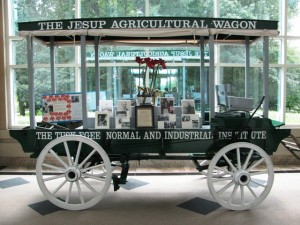We here are quite used to the idea that predicted climate change is going to have pretty dramatic effects on which crops grow where, and how well. And mostly we’ve focussed on the places that most need to make use of agricultural biodiversity to anticipate and deal with the trouble: developing countries, where agro-biodiversity may be one of the few resources farmers can control. Now, from the US, two stories that may just move things along there.
UPI.com reports on a study that predicts:
U.S. crop yields could decrease by 30 percent to 46 percent during the next century under slow global warming scenarios and by 63 percent to 82 percent under the most rapid global warming scenarios.
That’s for soybeans, corn (maize) and cotton, not some airy-fairy neglected species that only poor people depend on.
And it isn’t just crops either. An article in Scientific American, by crack reporter Brendan Borrell, reports on studies of how dairy cows treat the heat. One of his sources is Terry Mader, a professor in the animal science department of the University of Nebraska, Lincoln.
“You have heat generated from metabolism and digestion, and then they have to cope with the environmental component,” he explains, “How do they offset increased heat? They eat less.” The decline in feeding results in a decline in output, whether that’s meat, milk or fur. They also tend to have lower rates of conception during warmer months. “That’s just physiology,” Mader says.
Borrell’s article goes on to explore options, such as narrowing the genetic base of the American milk machine still further by selecting bulls whose offspring are less sensitive to increased heat. Alternatively, US dairy farmers could take a different route through the agro-biodiversity thicket and turn to hotter climates, such as Brazil, where there are heat-tolerant breeds that could share their goodness with US cows.
The problem is that a Holstein in the U.S. can produce up to 8,000 liters of milk annually, compared with lowland Brazilian breeds that are tick-resistant and heat-tolerant but are only producing just over a thousand liters of milk per annum.
Forgive me, but why is that a problem? Industrial dairy farmers around the world are protesting like mad because a combination of high supply and low quantity demanded has caused prices to plummet. They can’t give milk away, nor can they get a decent price for dairy carcasses. I’d have thought that the last thing they’d want now would be even more “productive” cattle.
Who will pay for the research needed to make cows less sensitive to heat? Who will benefit?
And a final note, because I can: who is in charge at the once-great Scientific American? The story’s headline is: Got Goat’s Milk? The Quest to Save Dairy from Climate Change. Where do goats come into the story? In the final paragraph:
Mader says some researchers in Brazil are so concerned about climate change, they’ve suggested the country set its sights on goat milk. “That’s a far-fetched concept!” he chuckles. “The industries will change, but we have animals in our cattle population that we can still select from.”
Ah, those funny foreigners. Always good for an amusing, if inaccurate, headline.
